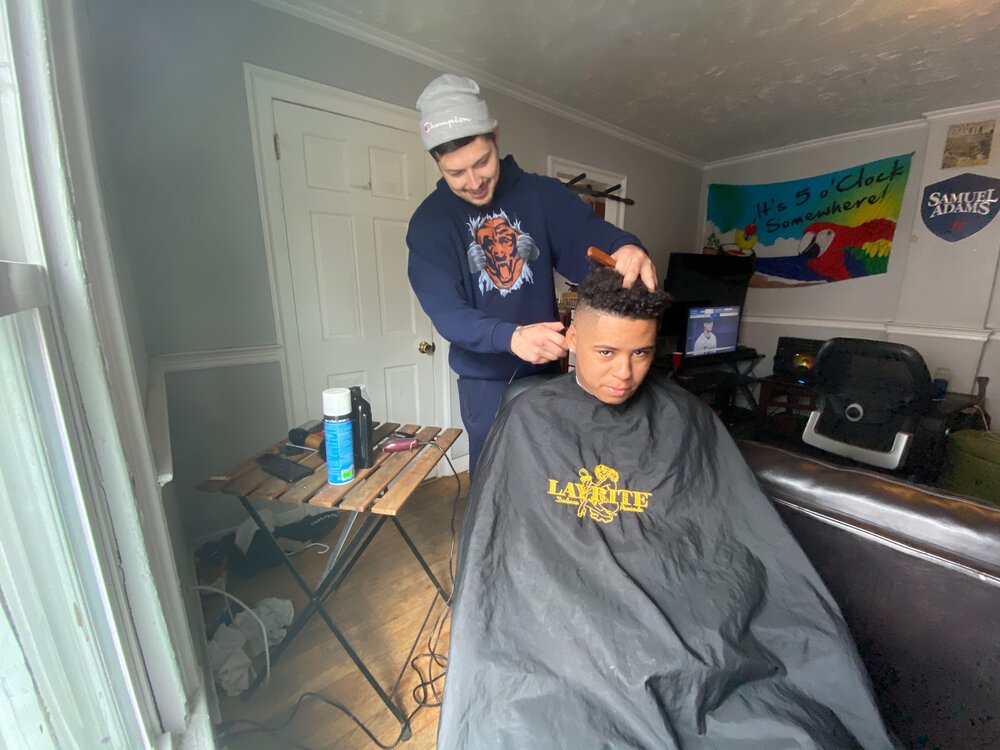Stay-at-home messages blare from surrounding televisions and cell phones. Rows of school buses line the streets neighboring homeless shelters throughout Connecticut. Hands of volunteers move quickly, alternating between serving food and threading sewing machines to pump out as many face masks as possible.
The goal?
Keep those without a home healthy and safe during the coronavirus pandemic.
According to the Connecticut Coalition to End Homelessness (CCEH), 409 adults and 94 children experience homelessness in the Greater New Haven area in 2019. The coalition is federally required to count the number of homeless people on the streets and in shelters each year in January.
Kelly Fitzgerald is a director at the United Way of Greater New Haven, which oversees the CCEH. There, her role is to coordinate, develop and implement resources to improve advocacy work around ending homelessness in the area.
“I think that homelessness is an issue across the country, and Connecticut is not immune to people who are experiencing a housing crisis,” Fitzgerald said. “It sometimes just takes a $300 unexpected expense that can propel a family into homelessness.”

The Connecticut Coalition to End Homelessness creates Point-in-Time (PIT) data each year. This data is analyzed to see how well Connecticut is doing to improve the homeless situation in its state. Courtesy: CCEH.org
Connecticut has seen a consistent decline in homelessness over the years, dropping five percent in the last year.
Alice Minervino, behavioral health program manager for housing and homelessness in Connecticut, said the “Housing First” philosophy adopted by the state is one reason for the decline.
“The main message of the Housing First approach is to shift the conversation in the housing community from “What can we do to help you?” to “What can we do to get you housed?” Minervino said.
This approach encourages shelters and service centers to treat homelessness as first and foremost a housing problem rather than an issue of mental illness, poverty, joblessness, or disability.
Another policy that has helped with the decline of homelessness is Connecticut’s Homeless Person’s Bill of Rights.
The bill, passed in June 2013, depicts homeless people as a protected class who can’t be discriminated against in employment, housing, or public accommodations. It also includes protections for homeless people to move freely in public spaces, such as parks and sidewalks, without being singled out for harassment by law enforcement officers.
However, given all the progress, there is still a big need in the community. To help, Fitzgerald says that the Coordinated Access Network is taking appointments for those struggling.
“If somebody is having a housing crisis, they call 211. The 211 officials do a quick assessment, and if they think this person needs to meet with a CAN specialist, they’ll set them up with an appointment,” Fitzgerald said. “We had around 2500 appointments attended in Greater New Haven alone.”
While there are programs in place to help those in need, the lack of housing is the prevailing issue.
As of February, 140 people sit on a shelter waitlist.
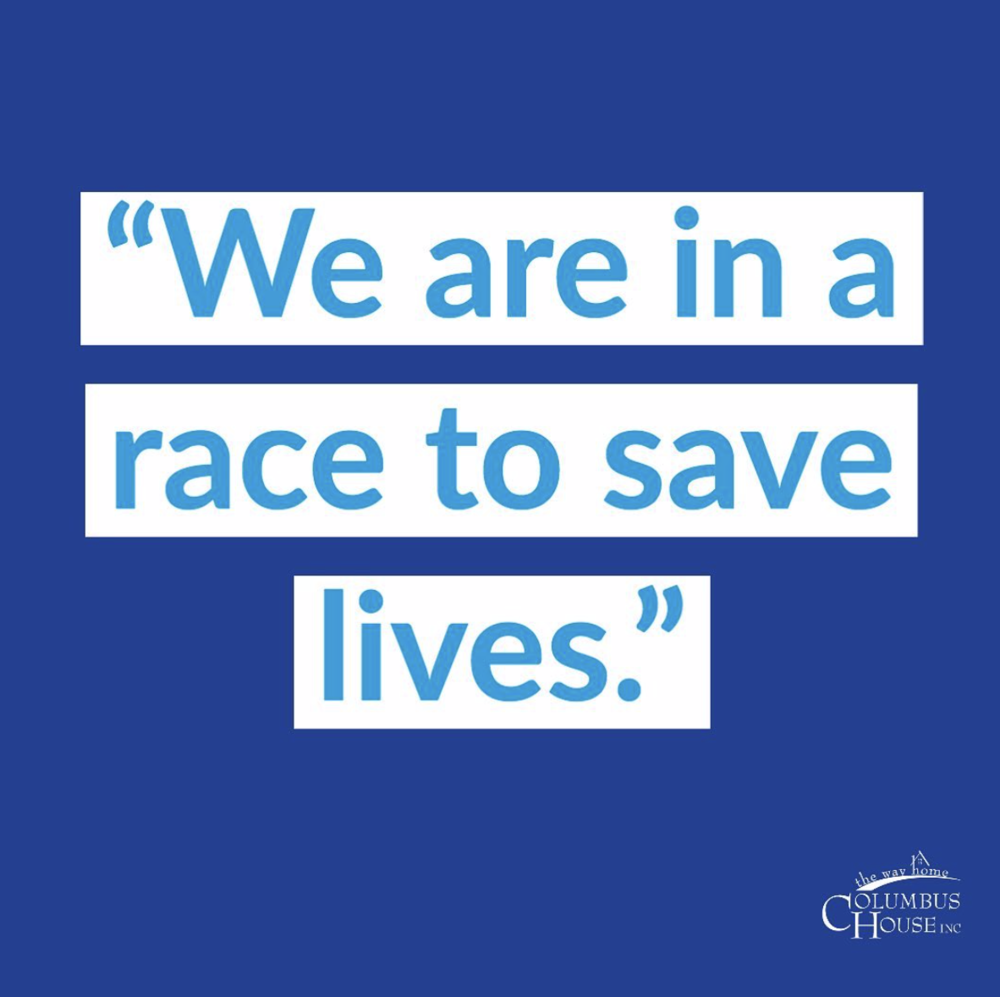
A message from Columbus house via its Instagram. Courtesy: @columbushousect on Instagram
“One of the things we say to legislators and city officials around budgets is that we want more money for housing, to help people to get out of shelter…not more shelter,” Fitzgerald said. “We don’t want to build another shelter, we want the resources to help get these people out of shelters.”
Protecting the Homeless During a Pandemic
Coronavirus has impacted basically every aspect of life in the United States. Shelter in place orders across 42 states have halted daily routines, as people find themselves without jobs and unable to leave their homes. With a “Stay Home” message being pushed across the nation, what does this mean for the homeless population?
John Brooks, the chief development officer of New Haven’s Columbus House said the formation of a plan to protect their clients came well before Governor Ned Lamont issued a shelter in place order.
“We took matters into our own hands and started making changes at the shelter right away,” Brooks said.

Columbus House utilized school buses to transport shelter clients to nearby hotels. Courtesy: Columbus House
“We have one large, main shelter in New Haven where we serve 101 people. Right across the street is what we call the Winter Overflow Shelter, and there’s 75 people in that building. So, as you can imagine, with 101 in one and 75 in another, paired with social distancing is really difficult.”
Brooks and his team began to take steps in mid-March to protect their clients.
They broke meals into shifts to ensure large groups of people didn’t congregate in the dining room. They also eliminated all volunteers and visitors from entering the shelter. In addition, handwashing stations were created from public drinking fountains, placed in the lobby and the dining room in the main shelter.
“It was convenient because we already had the plumbing and the drain there,” Brooks said. “It became mandatory to wash your hands as soon as you came into the building.”
However, as April approached and more serious orders were issued by Governor Lamont, Brooks and his team knew they needed to relocate their clients.
“We started working with the city to begin moving the most vulnerable clients out of the shelter, so people over 60, people with compromised immune systems, and people that we knew had health issues,” Brooks said. “They were the first grouping of people to be relocated out of the shelter and into the hotels.”
These hotels include those local to the Columbus shelters, including New Haven, Middletown and Wallingford. To satisfy social distancing guidelines, clients were given hotel suites to live in. Each suite houses two clients as they are able to abide by social distancing guidelines within the room.
By April 6, every client at every shelter was removed and placed in a hotel.
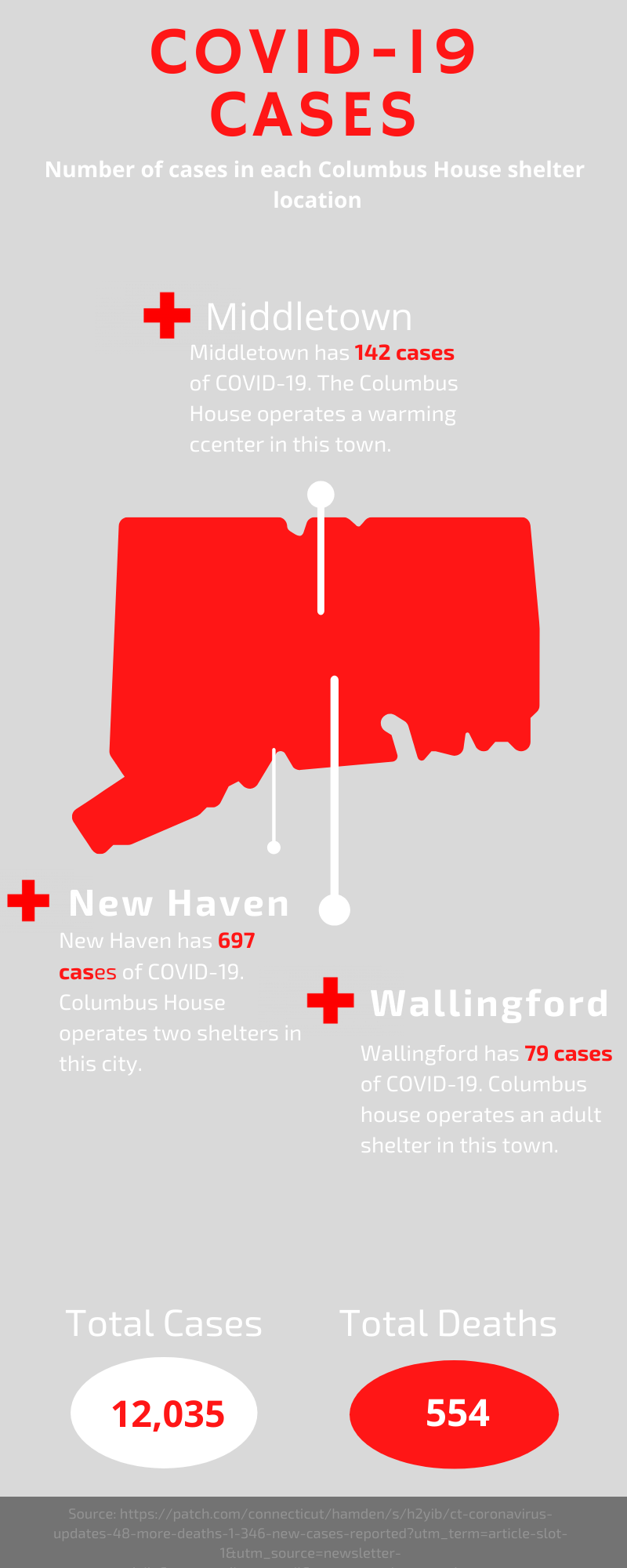
“All of our large shelters have all been emptied, which include the two in New Haven, a Warming Center in Middletown and an adult shelter in Wallingford,” Brooks said. “Every one of those clients are out and in a hotel. We continue to provide services for all of them. Our staff, instead of providing service at the shelters, are now providing it in the hotels.”
Throughout the relocation of all clients, Columbus House took extreme precautions to protect and avoid infection. These precautions have paid off, as not a single homeless person under the care of Columbus House has tested positive for the virus.
“We’re really proud of the fact that not one client has contracted the virus,” Brooks said. “We’re really, really proud of that fact.”
Brooks travels to different schools and companies to speak in an effort to break the stereotypes surrounding the homeless population. With the coronavirus outbreak, Brooks believes another one has come to the surface.
“I think one of the things people thought of right away was ‘All of those homeless people are going to make everyone sick’ when in reality, it’s the exact opposite,” he said. “We weren’t worried about them getting us sick, we were worried about us getting them sick.”
The data within his own organization proves this stereotype has no validity. While zero of his clients have contracted the virus, three members of his staff have tested positive.
“That proves the idea that we’re the ones going to the grocery store, going out places where we are going to be exposed to the virus, and bringing it back to them,” Brooks said. “That was always our fear.”
Another stereotype that has surfaced due to the pandemic is the idea that the homeless population is without healthcare.
“It’s estimated that around 75 percent of the clients we serve have healthcare,” Brooks said. “Part of our job is, if they come to us and they don’t have what they’re entitled to, our case manager will connect them with benefits like Medicaid and Medicare.”
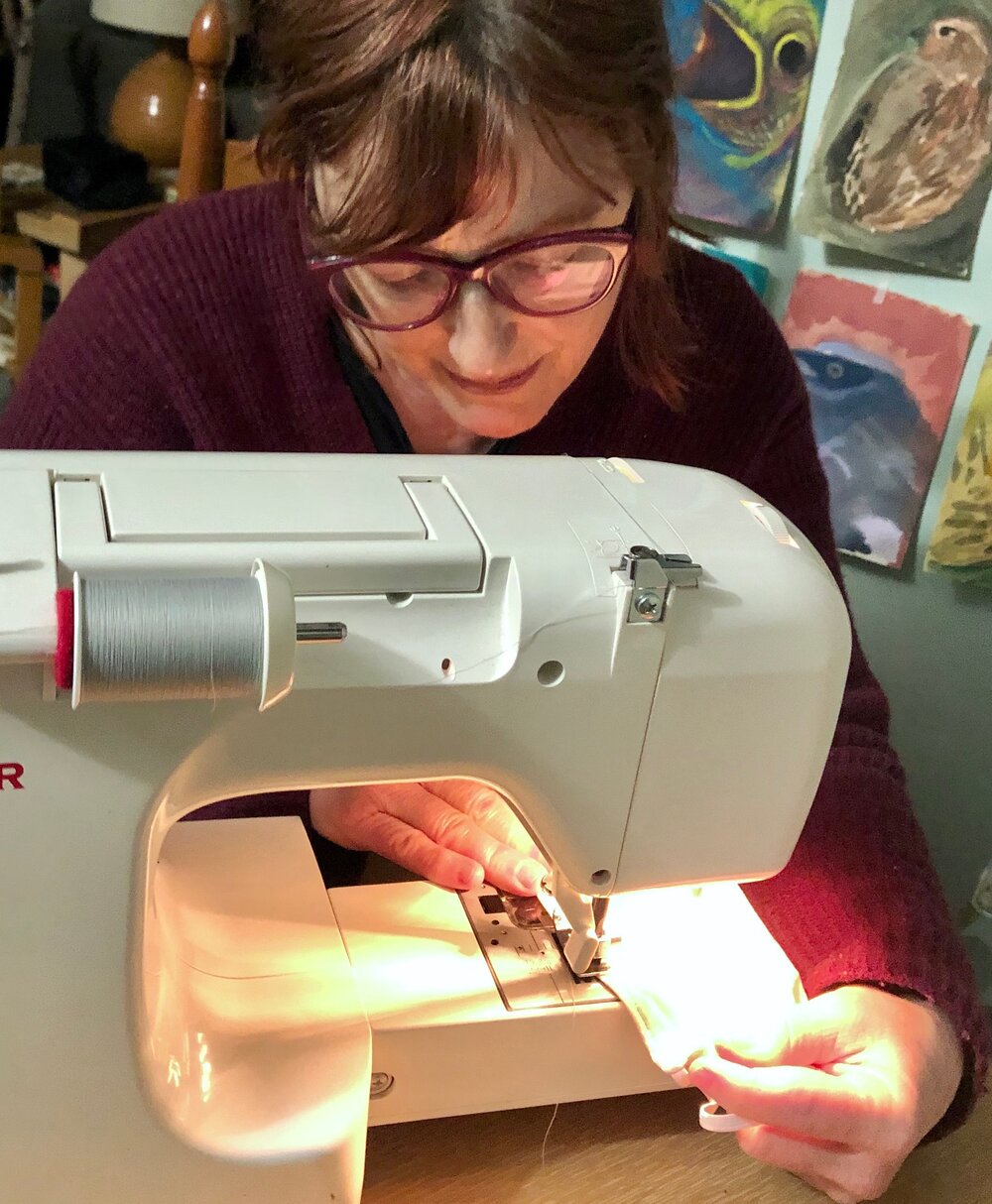
Volunteer Eva Scopino utilizes her sewing machine to help make face masks for the clients. Courtesy: Columbus House
Like most other parts of the nation, Brooks says his organization is seeing a huge shortage in personal protective equipment (PPE) in order to keep his staff safe. Although donations are greatly appreciated and accepted, there simply is not enough coming in.
“I had a plastic company that donated 100 plastic face shields, but I mean, we’re so short,” he said. “We’re so, so short. Same as in the hospitals, here we are dealing with 50 to 60 people at a time, and we’re short on masks and gowns and gloves.”
Brooks took the time to highlight the unsung heroes of his organization. The sacrifice and dedication of his staff, as they work on the front line with their clients everyday, is something he believes the media should shed more light on.
“You don’t hear anything about them in the media,” Brooks said. “The hospitals, of course, are right on the front line, and absolutely should get all of the applause in the world. But you hear more about the grocery store workers than the social workers.”
While the around the clock efforts of his staff are applauded, this change in operation is taking a toll on Columbus House financially. Instead of providing just overnight services, staff is required to take care of their clients 24/7. Therefore, Columbus House is required to pay their staff for these new hours.
“The city is helping us, the state is helping us, there are federal dollars coming in that have kicked in to help with this…but we’ve put up a lot of money,” Brooks said. “We’re paying our staff, and hopefully someday we get reimbursed, but we’re incurring a lot of additional costs.”
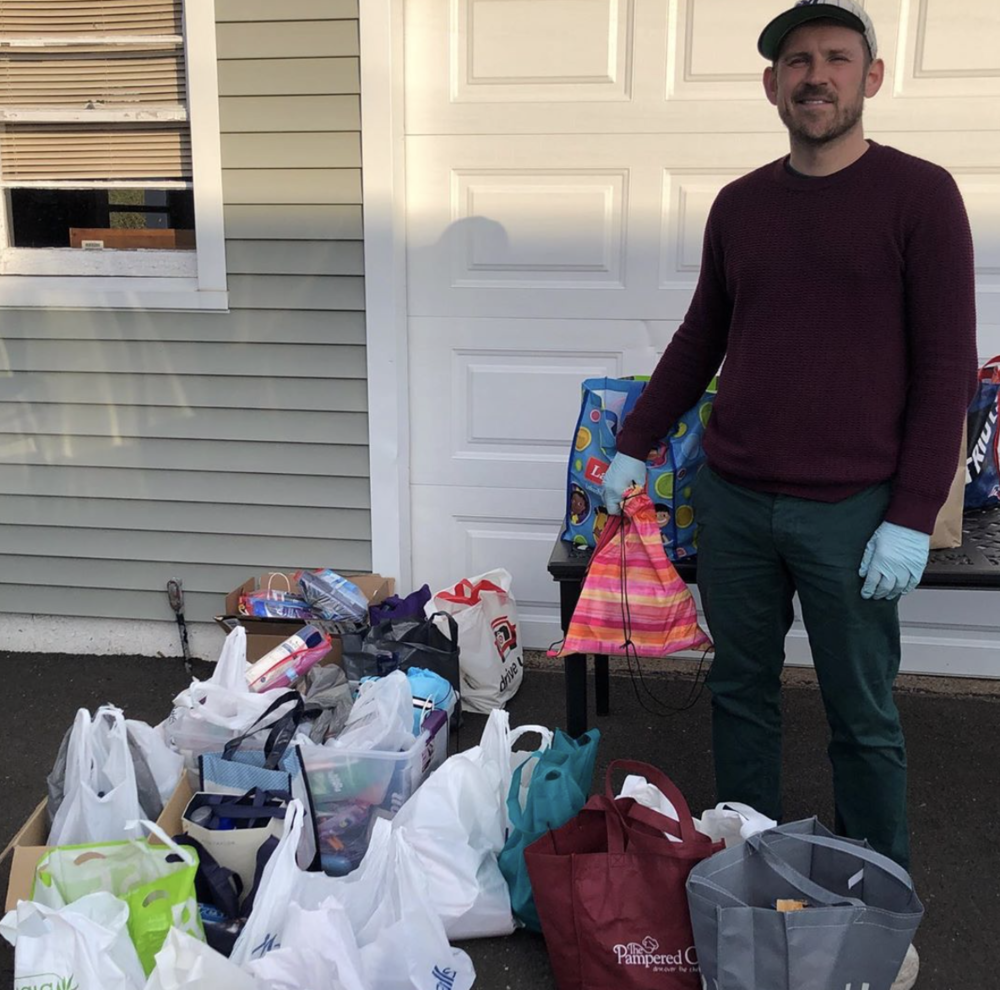
A volunteer from East Rock collected 80 supply kits for Columbus House clients. Courtesy: @columbushousect via Instagram
However, Brooks applauds Connecticut for its efforts to help the homeless population during this time. In comparison to other states, Connecticut has made positive efforts to protect some of its most vulnerable.
“Other states are having a lot of issues with this,” Brooks said. “I saw an article from a newspaper in Las Vegas, and they literally have people sleeping outside in the parking lot. How many hotels are there in Vegas that are closed right now? Instead, their homeless people are sleeping in parking lots with lines drawn to keep them six feet apart.”
In addition to hotels, the majority of universities across the country have opted to finish the spring semester online. With students not moving back into dorms, other states have utilized these vacant buildings in order to house the homeless. Suffolk University is one university transforming their dorms into shelters.
“We stand ready to help in any way,” Suffolk University President Marisa Kelly said in a statement. “Boston is our home, and the University takes very seriously its responsibility to be a good citizen at a time when we are all being called upon to pitch in and help.”
Suffolk University has provided an additional 172 beds to house the homeless while also practicing social distancing guidelines. Boston Public Health Commission will manage the dorms.
